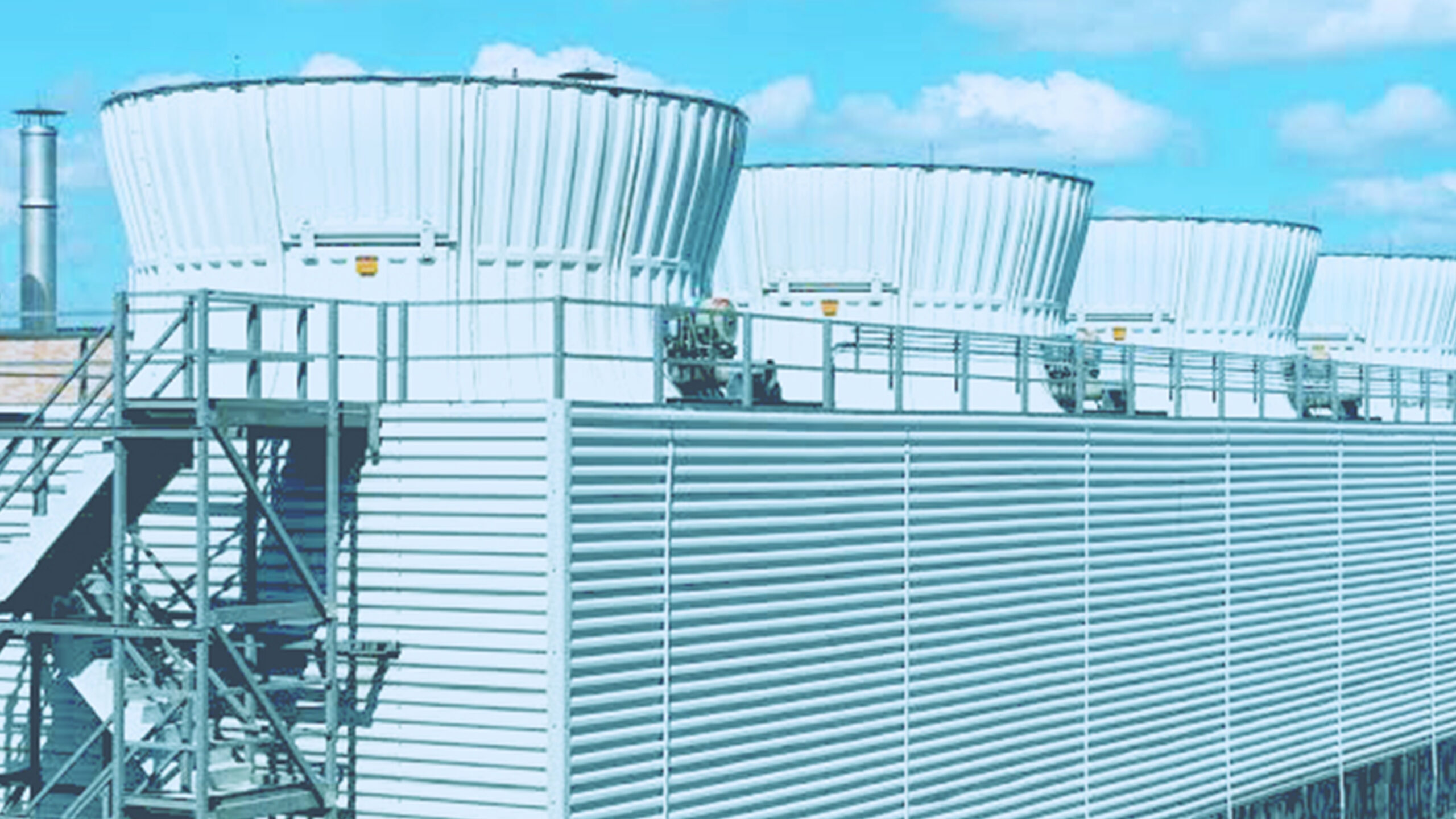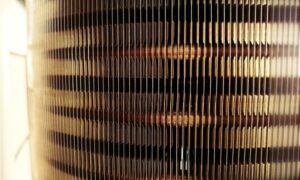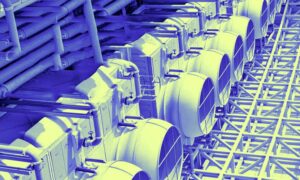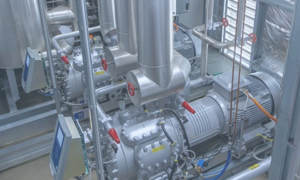Talking about the cooling tower market trends, industry leaders discuss ways to conserve water to enhance efficiency and sustainability in cooling towers.
Cooling towers are one of the essential aspects, especially in central air conditioning systems. They are a particular kind of heat exchanger that allows water and air to come in contact with each other to lower the temperature of the hot water. Cooling towers cools down water that gets over heated by industrial equipment and processes.
The global cooling tower market size is projected to expand to $ 4.63 Bn at a CAGR of 3.7 percent by 2027. Increasing industrial requirement and construction activities across the nation are creating humongous opportunities for HVAC&R equipment, and this demand is projected to drive the market.
Cooling tower market trends
When we talk about cooling towers, HVAC pumps; these all comprise of air-conditioning system. Today, the trend is about optimising overall system efficiency; which means when you have a cooling tower, the performance of cooling tower at certain load conditions or certain cooling conditions the power consumption may increase. It includes temperature which is not entering into a chiller, resulting in a slight decrease in the chiller efficiency. Secondly, we are focusing on the overall system efficiency, rather than just the component efficiency. According to Gaurav Mathur, Head-Area Sales Development, Commercial Building Services, INDO Region, Grundfos, “The products involved in air-conditioning systems are getting smart and intelligent. Various digital capabilities are coming in where different products communicate to each otherbased on the command that they can optimise the overall system. So, this is a major change which has happened in the market today.”
“New emission norms and increased thrust on health regulations have augmented the retrofit and revamp opportunities. Further, mandatory sustainability reporting introduced for the top 500 companies in India will also drive the energy and resource saving measures across industries”, says Dinesh Badgandi, CEO, Thermax Cooling Solutions Limited.
Suresh Sarma, Proprietor, SS Cooling Tower Consultants, feels that demands are majorly witnessed across the industries like Solar, Wind energy, cooling, HVAC, large industries, F&B among others. Interestingly, this has imposed more emphasis on lower cost of production. “Cooling towers and chiller plants enhances your plant’s efficiency and reduces the carbon footprints from the environment. A two-degree higher cold water can have an effect of largely on a 500 MW plant. Higher efficient cooling system also improves its availability by lowering the downtime, maintenance and operation cost.”
Meeting energy efficiency demands
If you look at the demand in terms of cooling, a major increase is expected especially towards the space cooling area; and the space cooling area can either be an industrial building or a commercial building. “But we expect a substantial increase in the space cooling segment. We might also experience an 8 to 10 times increase in the kind of cooling requirements towardsspace cooling”, Gaurav adds.
“While we see a growing need for cooling towers, we have also observed that the cooling towers market particularly power sector is shifting towards dry cooling solutions. This is mainly due to water conservation requirements stipulated by local governments and most of the times, the lack of clean water for heat dissipation through cooling towers” says Dinesh. Additionally, the cost of water treatment is also increasing, and hence customers are gettinginclined towards dry cooling solutions.
Not to forget that we are moving towards urbanisation, and we have a huge population living without air conditioners will also shift towards air conditioning solutions. So, there is a lot of demand which is going to increase in commercial as well as residential spaces in the coming two decades. Ever since the government released India’s Cooling Action Plan 2018, we can see an uptick in space cooling within buildings by nearly 11 timesin the next two decades.
Dealing with inefficiencies and increasing operational cost
In any air-conditioning system where water is one of the primary requirementsto exchange heat, you must take control oftwo major things; one – in terms of treatment of water and loss of water due to leakage, or water leakage inthe cooling tower due to evaporation and direct losses. To cut down the water loss and water leakage instances in the cooling tower you have to employ construction and design in a way where water wastage can be minimised in terms of drip losses and evaporation loss. This usually doesn’t happen as that’s how cooling is happening. So, whether or not, water will be wasted, but with appropriate designs, we should be able to reduce the loses.
Inefficiency generally occurs when you have water recirculating in the system. This creates bacterial growth in the system, further resulting in corrosion and scaling. Scaling usually happens when the TDS level of water is high. “In such instances, we must have a channelised water treatment systems to ensure that there is no microbiological growth in the system and apply proper chemical dosing to ensure that you do not have failing and corrosion, as it increases cooling and maintains the heat transfer in an air-conditioning system. And if you are maintaining the water quality we see fewer changes of corrosion and keep it micro-biologically safe. Also, we can ensure that the heat transfer rate maintains to be at an optimum level”, explains Gaurav. So, there are different ways like we are in industrial cooling tower applications. Grundfos’ chlorine dioxide solutions through dosing pumps can prevent microbiological and bacterial growth. Furthermore, installing anti-corrosion and anti-scaling solutions can help maintain efficient cooling towers.
Whereas, Dinesh feels that the increased efforts by the industry to conserve water, directives set by the local governments, issues related to costs of the water treatment and chemicals arekey factors, driving customers to lookout for efficient methods of water management. Lack of cooling water resources and Freon Gas regulation remains a major constraint faced by the industry.
So, that is a great solution when you are looking at controlling the bacterial growth and you also have whenever there is a bacterial problem of the journey now, this is a very unique virus which is affecting the area nearby the cooling towers and this bacterial growth can be arrested with the help of outside. So, having a proper water treatment system is key to ensure that any kind of corrosion is prevented.
Catering to the evolving needs, we at Thermax offer a range of dry cooling options such as air cooled condensers, dry coolers and air cooled heat exchanger. These products provide a widerange of benefits to the customers and are specifically targeted towards eliminating the water consumption for heat dissipation andrequire low maintenance, Dinesh adds.
Technologies to reduce water wastage in cooling tower
Thermax provides a variety of technologically advanced products and solutions in the process cooling segmentto increase the efficiency of production processes, operation of equipment and minimise water usage. Some of these include:
- Advanced E&I and automation controls to optimise the water consumption in wet cooling towers
- Air Cooled Condensers (ACC) to eliminate water requirement especially in the power industry
- Closed Loop Cooling Towers (CLCT) as against the conventional open type cooling towers as they are energy efficient and suitable for all season requirements. Elimination of the intermediate pumping system and heat exchanger helps to improve the efficiency of the system. Moreover, the closed loop systems can effectively control algae formation in the water systems, which is an important consideration as perhealth regulation norms.
- Adiabatic cooling for specific applications (clean room,data centres) can be used to reduce the water consumption upto 80 percent
- Additionally, hybrid cooling towers is an emerging trend to optimise water usage in the system
Gaurav, on the other hand, talks about the three-step process to reduce wastage. The first step would be having a proper automation system, where all the equipment’s in an air conditioning system are very automated and they are controlled in perfect synchronisation between each other.
Optimisation and automation are the two essential technical aspects to increase and enhance energy-efficiency in a cooling tower and its parts. With appropriate application of automation and proper optimisation of technologies,we can have the system running at the best efficiency point. For example, when you look at a chiller or a chilled water system the efficiency of that particular equipment changes with the heat load; so, the performance is analysed and defined with the heat load of the system. Automation and optimisation ensures that this decision is taken in time, and we are running the system in the most optimal endpoints.
So, the cooling towers all are having a performance impact on the chillers on ships. So, what a cooling tower is doing, it is moving the water which is coming from the condenser side of this and it is sending it back to the chiller. So, the external temperature and conditions can reduce the water temperature inside, and run the chiller at a higher efficiency point as compared to when the temperature is higher. So we have devised a different optimisation strategy.
Notes to remember while desiging systems efficiency
When we talk about any building right at the designing level, we can improve the efficiency just by the design of the building and ensure on reducing the entire building’s load. And if we can stone it right while designing the building’s HVAC systems, where we can trust the quality materials to reduce the cooling and heating load, even a basic orientation can bring down the evolution. So, I would say that right from the building orientation and the design is a first step where we can plan to enhance the efficiency.
When you havethe load design based on the orientation of the building, we should be able to look at available technologies to meet the optimum requirement. For instance, we have a technology called – radiant cooling where we perform cooling through a temperature-controlled surface that cools indoor temperatures by removing sensible heat and where more than half of heat transfer occurs through thermal radiation the efficiencies are much better, and the amount of energy required for the tonnage of coolant is lower for radiant cooling.
______________________________________________________________
We can improve the efficiency just by the design of the building and ensure on reducing the entire building’s load.
Gaurav Mathur, Head-Area Sales Development, Commercial Building Services, INDO Region, Grundfos
______________________________________________________________
Increased efforts on water conservation and water treatment from the industry and the government are driving the customers.
Dinesh Badgandi, CEO, Thermax Cooling Solutions Limited
______________________________________________________________
Higher efficient cooling system also improves its availability by lowering the downtime, maintenance and operation cost.
Suresh Sarma, Proprietor, SS Cooling Tower Consultants
Cookie Consent
We use cookies to personalize your experience. By continuing to visit this website you agree to our Terms & Conditions, Privacy Policy and Cookie Policy.















